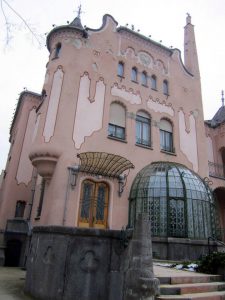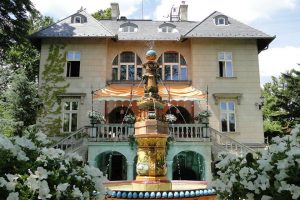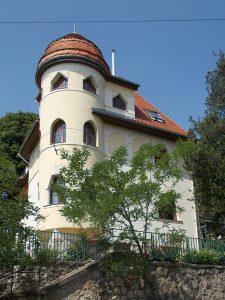Budapest uncovered: Stunning mansions and villas

Mansions first appeared in Hungary during the second half of the 19th century, stemming from the upper-middle class’ recently popped up need of being close to the city centre, which in fact can be traced back to the bourgeoisie’s growing social aspirations. The private villas constructed at this time are miniature palaces transformed into an urban space, each retaining the general elegance of the aristocratic traditions it’s rooted in, while bravely diving into the refreshing waters of new styles. Here come some of the most beautiful mansions in Budapest, from both sides of the river.
The collection is brought to you by Funzine 🙂
Kőrössy Villa
Strolling along the tree-lined Városligeti fasor, it’s hard to imagine that once it was the busiest street in Pest: as the natural continuation of Király utca, for many years it was the most straightforward escape route of downtown inhabitants to the green and spacious City Park. Then one day in 1876 broad Andrássy út was opened, and with that, the wealthy citizens of Budapest swarmed the suddenly silenced street, each moving in to brand new villas, designed by the best architects of the era.
One of these architects eventually decided to move into the neighbourhood, and built the most stunning villa of the whole street.
Intended by architect Albert Kőrössy to be used as his home office, the three-storey family mansion was constructed in 1900, inspired by the styles of French art nouveau and German jugendstil. The facade of the creamy-dreamy villa is richly decorated by peacocks, vines, sunflowers, and the allegorical figures of Sculpting, Painting, and Architecture.

The leaded glass windows were manufactured by Miksa Róth, as was the ornate, stained glass window of the lobby. Badly damaged during the WWII bombings of Budapest, the imposing villa spent the subsequent seven decades in a simplified state. After a Hungarian real estate development company bought the building in 1996, it was finally restored to its original pomp in 2015, to give home to a salon and a café.
1071 Budapest, Városligeti fasor 47.
Sipeki-Balás Villa
Hidden behind the branches of hundred-year old trees at the north-eastern edge of City Park, Sipeki Villa is one of the later masterpieces of Ödön Lechner, the Hungarian architect who pioneered the style of Hungarian art nouveau. The pastel pink villa was built in 1907 for Béla Sipeki-Balás, the bailiff of Zala county: its towering chimney, gracefully rounded winter garden, and ornate facade make this oft-overlooked, gingerbread building one of the most stunning examples of Lechner’s genius.

When Sipeki-Balás died in 1944, he had no heirs to bequeath his villa to, so he left it in his will that the villa be given to the Hungarian Federation of the Blind and Partially Sighted, who have made it their headquarters. Although today the exterior of the building is in a rather sorrowful state, the beauty found within its walls (including a staircase decorated by colourful Zsolnay ceramics) will make up for the gaps present in the villa’s pink plaster.
1146 Budapest, Hermina út 47.
The Writer’s Villa
Nestled high above the city on elite Széchenyi Hill, the Writer’s Villa is a four-storey mansion built in 1881 for Baron József Szterényi, the Austro-Hungarian minister of commerce at the time. Refurbished as an exclusive lodging for the BrodyLand hospitality venue franchise a couple of years back, the 500 m2 villa is a standout for a number of things, including a large ornate garden fountain made with Zsolnay tiles, a lush garden, and a gorgeous dining room (added in 1913 as a winter garden), which features a number of elaborately designed stained glass windows made by Miksa Róth.

No wonder that in 2016 it was selected by the Evening Standard as one of the best new hotels to stay in.
1121 Budapest, Művész út 2.
Judges and Prosecutors Villa District
Built between 1910 and 1912, the Judges and Prosecutors Villa District is Budapest’s first deliberately planned villa district, composed of almost forty estates and an apartment house-slash-dormitory (destroyed during WWII) designed by Aladár Árkay, an important figure in the history of Hungarian art nouveau. The similar in style, but distinctly unique buildings showcase elements of Jugendstil, the Transylvania-inspired architecture of Károly Kós, and the prairie houses of Frank Lloyd Wright. Situated only a couple of minutes’ walk from Déli railway station, the majority of the villas are one-storey high, with each floor giving space to three rooms – a notable exception is found under 40 Ráth György utca.

Featured image: www.facebook.com/TheWriter’sVilla
Source: www.funzine.hu/en





